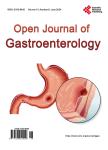Prevalence of hepatitis B infection and factors associated in children of Ivorian HBsAg carrier subjects
Prevalence of hepatitis B infection and factors associated in children of Ivorian HBsAg carrier subjects作者机构:Department of General Medicine and Hepato-Gastroenterology Teaching Hospital of Yopougon Abidjan Cote d’Ivoire Medical Private hospital of Danga Cocody Abidjan Cote d’Ivoire
出 版 物:《Open Journal of Gastroenterology》 (肠胃病学期刊(英文))
年 卷 期:2013年第3卷第4期
页 面:237-240页
学科分类:1002[医学-临床医学] 100214[医学-肿瘤学] 10[医学]
主 题:Hepatitis B Infection Intrafamilial Transmission Screening
摘 要:Aims of the Study: 1) Determine the Prevalence of Hepatitis B virus (HBV) infection in children (contact subjects) of chronic Hepatitis B surface antigen (HBsAg) carrier subjects (index subjects);2) Search for factors associated with HBV infection in these children. Patients and Methods: Retrospective-crosssectional study (January 5th, 2006 through December 31st, 2012). Studied parameters: biological and clinical characteristics of index subjects;Prevalence of HBsAg and Hepatitis B core antibody (HBcAb) in their children. Search for the HBV infection associated factors in the children (univariate analyses through Chi-square or Fisher’s exact test;multivariate analysis through a backward logistic regression). Results: Our 44 subjects’ median age was 43.1 ± 7.49 years and 88.6% of them lived with a spouse. Average number of children per index subjects was 2.3 ± 1.1. Our 92 children’s median age was 9.3 ± 4.55 (ranging from 1 to 15 years), and 43 (44.8%) were vaccinated against HBV. HBV infection prevalence was 24% (23/96 of which, 4 were HBsAg positive and 19 HBcAb positive subjects without HBsAg). Independent factors associated with HBV infection in children of index subjects were HBV DNA for index subjects 2000 IU/ml (OR = 11.5;p = 0.001), existence of HBV in two parents (OR = 7.9;p = 0.03) and absence of HBV vaccination in the children (OR = 30.9;p = 0.003). Conclusion: Immunization coverage for children of index subjects was insufficient, especially before the introduction of HBV vaccine into the enlarged vaccination program. Outside vertical transmission, those children were more exposed to HBV intrafamilial transmission risk when they were not immunized against HBV, when both parents were infected and when HBV viremia in index subjects was higher than 2000 IU/ml.



